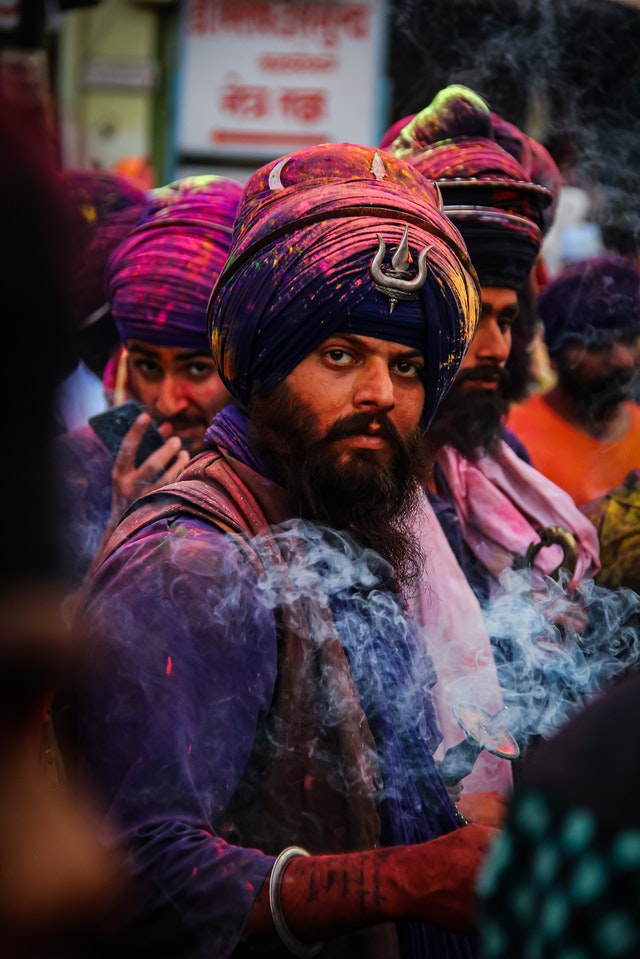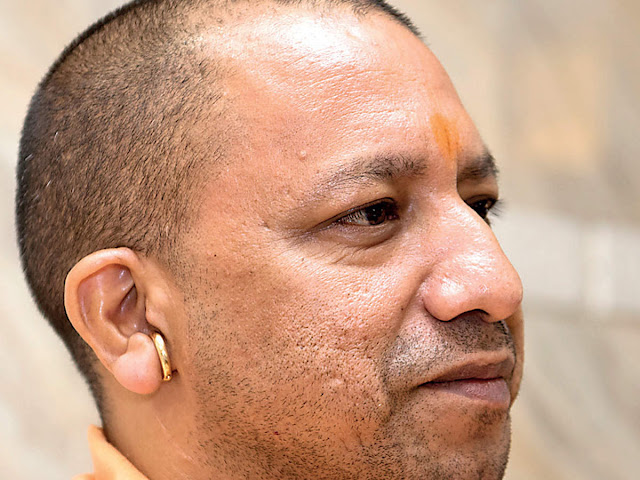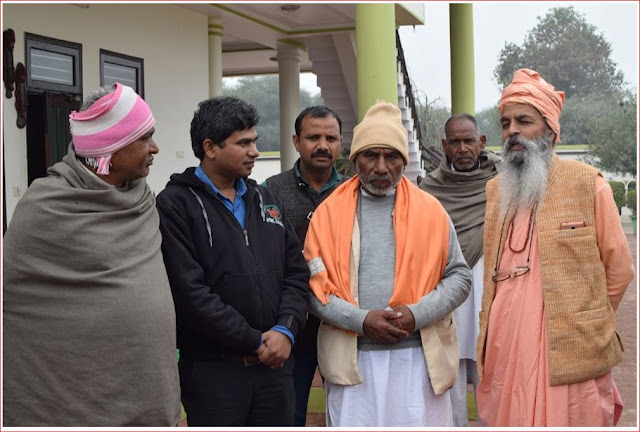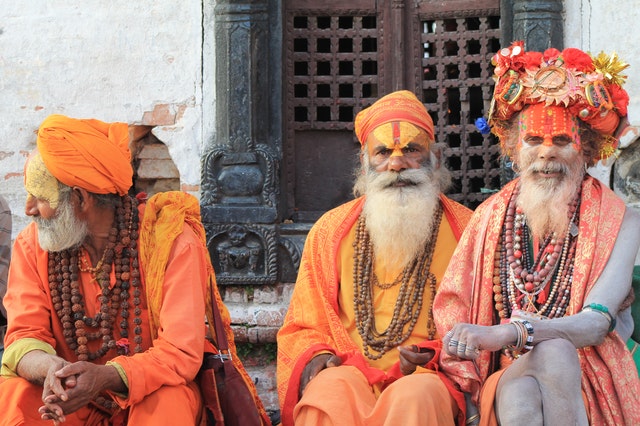Lecture and Explanation, Reading to be covered:
Uberoi, J. P. S., 1991, Five Symbols of Sikh Identity, in, T. N. Madan (Ed.), Religion in India, Delhi: Oxford University Press, pp. 320-332
Keywords: Sikhism, Symbols, Religion, Five Symbol of Sikhism and their Importance
The University of Delhi, Bachelor of Arts, Sociology of India
 |
| Five Symbols of Sikh Identity by JPS Uberoi (in, Religion in India by TN Madan, Ed. 1991) Image Credit pexels-jaspreet-singh-4049588 |
This article is about the symbol and philosophy of Sikhism. The article is discussing the symbol of uncut long hair for male.
However, the author has made it very clear that Sikhism is anti-ritualistic.
Pg, 321
Here the author is talking about the Methodology of Writing this Paper.
He uses the theory of Social Action by Max Weber.
Pg. 322
Symbols, Sects and Initiations
Meaning of Symbol of Long Hair
For the author, the long hair of man is a symbol of manliness, virility (a wide range of masculine characteristics viewed positively), honour, power, aggression and so on.
In the support of his idea, the author is stating examples from Greece, and Manusmriti.
The author also quotes Manu who specifies that ‘Even should a man be in wrath, let him never seize another by the hair, when a Brahmin commits an offence for which the members of other castes are liable to death, let his hair be saved off as sufficient punishment.’
For me, the idea of Manu for punishment is not acceptable in modern society.
Pg. 323
The author has compared the long hair of a man with the Chinese pigtail, and for him, this resembles Hindu Shikha. The Chinese pigtail is a symbol of honour in Madarian custom.
However, later on, the Taiping rebellion and Yat-sen’s movement sought to dispose of the pigtail, and they were called the ‘long-haired rebels’.
Pg. 324
Sanyasi: Hindu and Sikh
One can become Sanyasi only after passing through the first three statuses (Ashramas) of Brahmanical Hinduism.
Four Ashram of Hindu Religion
The four ashramas are Brahmacharya (student), Grihastha (householder), Vanaprastha (retired) and Sannyasa (renunciate). Under the Ashram system, the human lifespan was divided into four periods.
However, the Sanyasa system also existed before Hinduism, during the Buddhist periods.
The ultimate idea of Sanyasi is that “I am no one’s, and no one is mine”.
Pg. 325
We can find a rich Sanyasi system in Indian society, which is also called Jogi (Yogi) System. Who left their home to search for the truth, by tacking Mantra (spiritual formula) from their Guru.
One of such famous Guru in the Jogi (Yogi) system was Guru Gorakh Nath.
#JUST-for-KNOWLEDGE Yogi Adityanath, CM of UP is coming from that sect. They are worshipping Shiva.
Kripan or Knife
In Jogi initiation, the neophyte (chela/student) is first made to fast for two or three days.
#WHY? Because sometimes they (Jogi/ Yogi) may not get food for a few days.
A knife is then driven into the earth, and the candidate vows by it not to –
(1) engage in trade
2) take employment
3) keep dangerous weapons
4) become angry when abused, and
5) marry
He must also scrupulously (with great effort to avoid doing wrong) protect his ears, for ‘a Jogi (Yogi).
#PLAY-RELATED-VIDEO of Yogi Adityanath
https://www.youtube.com/watch?v=luleyp9O1Eo
 |
| Yogi Adityanath |
All Jogi (Yogi) Community need to wear a ring on their ears The photo is presented here only for educational purposes.
 |
| Anil Kumar with a religious leader from Jogi Sampraday/ Gorakh Sampradaya |
About Photo: Anil Kumar with a religious leader from Jogi Sampraday/ Gorakh Sampradaya. He discusses several things about the Jogi/ Yogi and their contribution to society during Bharat Bhrama with Pramod Ranjan and Anil Varghese of the Forward Press.
Pg. 326
The Sikh Initiation and its Five Symbols
Traditionally Jogi used to live necked or smeared with ashes, the Sikh neophyte is made to come tidily clothed to the ceremony.
The ear-ring affected by the Jogis are specifically forbidden to him. Instead of requiring the Sannyasi’s resolve, ‘I am no one’s, and no one is mine’, the Sikh rite, emphasizing a new birth, requires the neophyte to reply in answer to questions that - his father is Guru Gobind Singh and his mother Mata Sahib Kaur (wife of Guru Gobind Singh), and that he was born in Kesgarh and lived in Anandpur.
Neophyte = a person who is new to a subject or activity, here new to Sanyas or Chela
Pg. 327
Kirpan
In contrast to the Jogi never to touch we open, the Sikh neophyte is invested ritually with the Kirpan (sword) as one of the five K’s which he must always wear thereafter.
Pg. 328
 |
| Five Symbols of Sikh Identity by JPS Uberoi (in, Religion in India by TN Madan, Ed. 1991) Image Credit pexels-bishesh-pandey-1117808 |
Kangha
The kes and kangha form a unitary pair of symbiosis, each evoking the meaning of the other, and their mutual association explains the full meaning of kes as distinct from jata.
Kara
The kirpan (sward) and the kara (steel bracelet) similarly constitute another pair of symbols, neither of which can be properly understood in isolation.
Kacha
Kacha can be understood as an agent of constraining, like the comb and the bracelet, though the subject of its control is not stated. The Kachh constitute a unitary pair of meaning with it, signifying manly reserve in commitment to the procreative world as against renouncing it all together.
Pg. 329
Sikhism and Hinduism
The Hindu system of social relations called caste, using that term to include Varna as well as Jati (caste), is a fact only half of Hinduism.
Importance of Varna-Ashram-Dharma
The whole Hindu Dharma is better described by the term Varna-Ashram-Dharma that is, caste as well as the institution of the four stages, statuses or role of individual life (ashrams).
The hierarchical system of local caste groups, predetermined by birth, on the one hand, and the contrasted system of voluntric cult association or orders and sects, on the other hand, cur across one another, forming the essential warp and woof of Hinduism,
Pg. 330
The third structural feature, territorial kinship, necessary to uphold VarnaAshramDharma possesses its own relations with the two contrasting worlds of the Brahmin and the Sannyasi
Pg. 331
Pg. 332
The social functions of the Sikh initiation rite is, precisely this: to affirm the characteristic rights and responsibilities of the three spheres as equally valid and to invest them as an undivided unit in the neophyte. They are 1) Rajya, 2) Sanyas, and 3) Grihasta
The new Sikh, therefore, takes no Jogi vow to renounce his procreative power and never marry, never touch the weapons or take other employment or engage in trade, every social occupation is henceforth open to him
In Brief Five K’s of Sikhism
Five things all Sikhs should wear, and conveniently they all start with K. They are –
the Kesh (uncut hair),
Kangha (a wooden comb),
Kara (an iron bracelet),
Kachera (cotton underpants) and
Kirpan (an iron dagger) and what they mean to the Sikhs who carry them
Image Credit: Photo by Jaspreet Singh from Pexels
Image Credit: Photo by Bishesh Pandey from Pexels
Lecture, Study Material, and More
Keep Visiting ~ Stay Curious





.jpg)



1 Comments
This reading of JPS Uberoi 's work is simplistic. JPS quotes Pincott "religion of Guru Nanak was ’based on Hinduism, modified by Buddhism and stirred into new life by sufism’". Also he uses structural sociology which means that one doesn't look at the symbols as single elements but in relationship. The 'kesh' in relation to 'kanga', the 'kara' in relation to 'kirpan' and the kacha in relation to desire. They represent a modern philosophy and a convergence of the reform that was embodied in Bhakti movement.
ReplyDelete